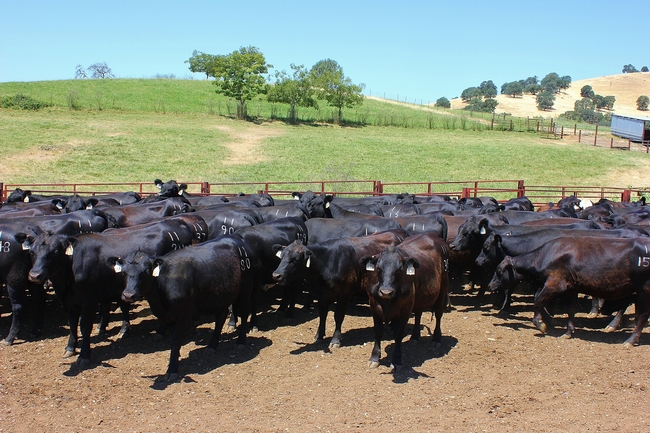- Author: Jeremy James
Summer is a prime time for pinkeye on California rangeland. SFREC is not excluded from this problem so we screen for pinkeye frequently, particularly during animal handling efforts.

Last week, 103 heifers were examined for pinkeye at SFREC. Most of the cattle had no visible symptoms of eye troubles, but a portion had some degree of pinkeye present – healing, active, or scarring.
From a manager's viewpoint, this is a very costly disease. Pinkeye is known to inhibit calves from thriving due to ocular pain and poor vision. The cost of treating pinkeye with antibiotics adds up quickly, not to mention the extra time and effort that is spent administering treatment. Additionally, the marketability of affected animals can be hindered. Here is a link to general information on the disease:
http://www.cattle.com/articles/title/Pink+Eye.aspx
Pinkeye is a complicated disease and SFREC has provided key research support in this arena for the last several decades. Pinkeye is caused by Moraxella bovis, a bacterium that is typically transmitted from infected animals by flies. Multiple factors may contribute to the development of the disease, but eye irritation to some degree is necessary for infection. Cattle plagued with IBK develop painful corneal ulcers that oftentimes leave scarring in the eye. When the cornea ruptures, blindness will occur. This link offers additional information published in 1990 from research conducted at SFREC:
http://ucanr.org/repository/CAO/landingpage.cfm?article=ca.v044n02p11&fulltext=yes
The challenge of controlling pinkeye continues to be a prominent focus of scientists and industry professionals. Recent studies at SFREC, led by Associate Professor John Angelos at the University of California Davis School for Veterinary Medicine, have increased knowledge of the molecular composition of M. bovis cytotoxin, and even indicate promise for a recombinant subunit vaccine. Agrilabs, a company that works to connect research, manufacturers, and consumers, published an article featuring Angelos and worthwhile information about IBK:
http://www.agrilabs.com/t-BHW_Dairy_Sp2011_PinkeyePrevention.aspx
A successful management strategy for pinkeye in cattle involves an integrated approach that should include mineral supplements and quality nutrition to help maintain a strong immune system, reduction of environmental irritants (i.e. those annoying little creatures called flies and tall grasses), and a well-planned medication strategy. Isolation of infected animals is always a wise measure to take. Be sure to contact your practicing veterinarian for specific questions and recommendations.




